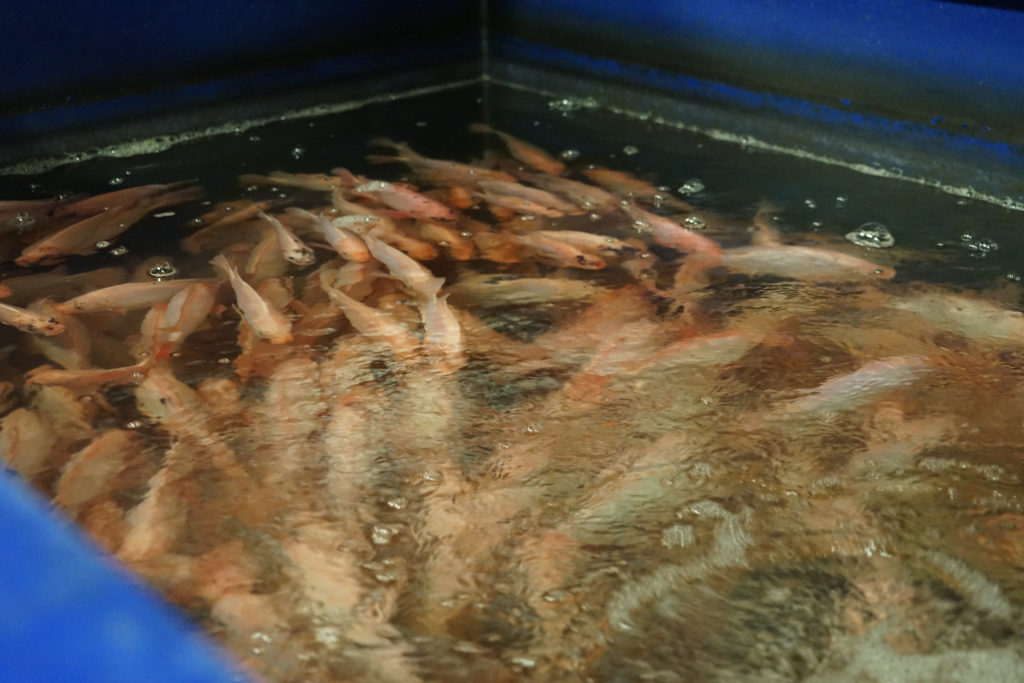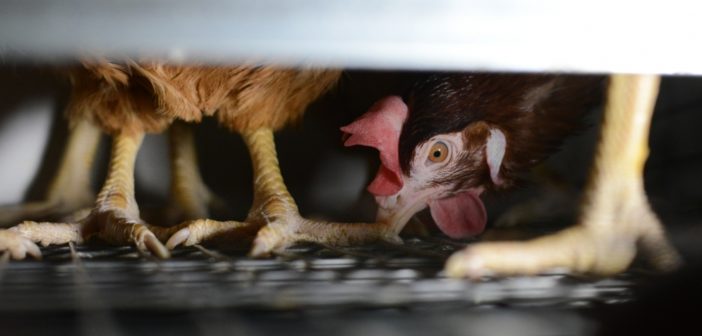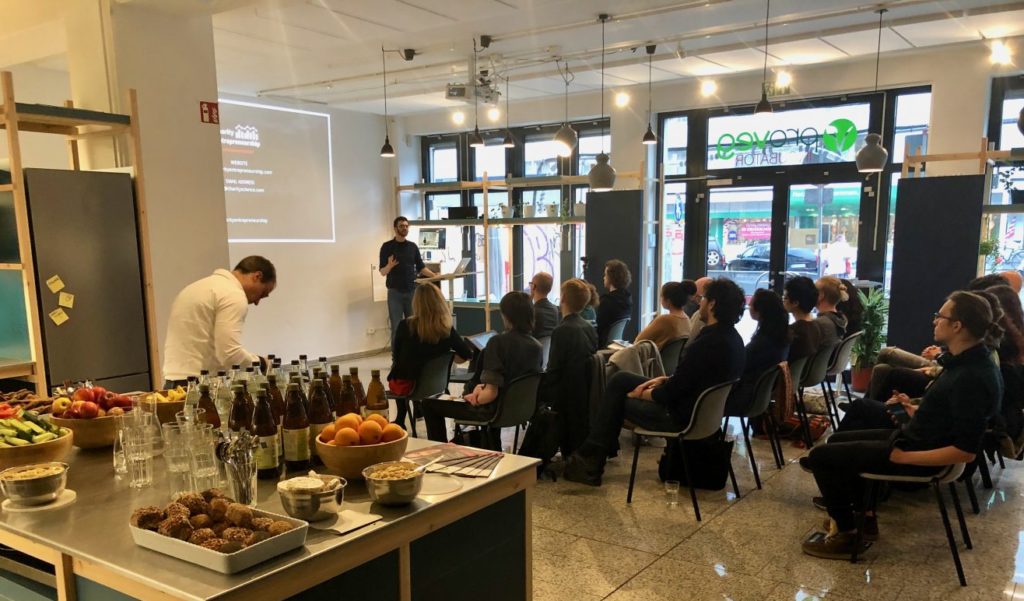Charity Entrepreneurship (CE) is a research and training program aimed at creating multiple high impact charities within a different focus area each year. They are part of Charity Science Foundation of Canada. In 2018-2019, their research is focused on animal welfare. Their mission is to increase the number of effective charities in the world. Recently, Charity Entrepreneurship published the Top Charity Ideas 2019, a list of recommended charities based on months of research, including six animal advocacy-focused charities CE wants to help start through their incubation program. I interviewed Charity Entrepreneurship’s director, Joey Savoie, who has founded several charities and is now working to make it easier for others to start new high impact organizations.
Vegan Strategist (VS): Joey, there are over one million nonprofits and hundreds of charities in the world. Why would founding new organizations be a good way to make a difference?
Joey Savoie (JS): The two biggest factors that are easy to forget when considering the number of nonprofits are the scale of the problems we face and the relatively small size of most nonprofits. Regarding the first, there are, for instance, over one million doctors in the United States and several times that worldwide, and yet there are still great problems with pain and disease. The problems of the world, from global health to animal issues to economic challenges, are huge, and many of them get virtually no attention despite their importance.
And then there is the second factor: almost all charities are really small. In the United Kingdom, for example, 39% of charities raised less than £10,000 over a year, and another 34% raised between £10,000 and £100,000. This means that 73% of charities are raising less money than the cost of hiring a single doctor. The ratios are similar across most countries. When you consider both the size of the problems and the relatively small current reach of charities, there are still plenty of areas where starting a high impact organization could make a significant difference.
VS: Many people seem to start a charity in an area that they are personally connected to. Is that the best idea?
JS: I can see several issues with that. For one, the most important causes might not affect the people who are in a position to start a nonprofit. Examples include helping those who cannot help themselves, such as animals. There are also problems that are not as visible to those who have the resources to start a charity but still affect many beings, such as factory farming compared to companion animal welfare.
Many people would agree that when we make an important decision, like buying a house, it is good to carefully look at data as part of the process. Similarly, for such a big question as which charity to start, it is important to consider the numbers, and not only what has personally affected the founder. Some people I know have saved a great number of animals, but are not “animal people” themselves, and did not grow up with them as kids. They just looked at the conditions some animals are kept in, considered the numbers of victims, and realized it was an impactful way to help the world, regardless of their personal background. This idea holds true for more than just starting charities; it can also help you pick which animal to focus on helping, or which area to get a job in.
VS: So which animals are most important to focus on? All animals seem important to help.
JS: Sadly, many animals do need assistance, but we don’t have the resources to help them all, so we need to prioritize. Although all animals deserve a suffering-free life, some animals are currently more neglected or mistreated, so you can help prevent more hardship if you focus on them.
Partially because they are out of sight, farm animals receive much less money and attention compared to other animals. And then among farm animals, some of them receive less attention than others, and some have substantially worse lives. Factory farmed birds and fish generally have the lowest life quality. When we considered a number of factors, including current focuses and which animals have the hardest lives, we ended up determining that fish look like the most important animal group for activists to focus on.

Factory-farmed birds and fish have the lowest life quality, so they may be the most important animals for charities to focus on. Image credit Kim Bartlett / Animal People, Inc.
VS: So given a focus on chickens and fish, what are the top ideas for new animal charities?
JS: The interventions we published on our Top Charity Ideas list might still change, but based on the research we have conducted so far, we have concluded that the most promising ideas include:
- Campaigning corporations to improve fish water quality, particularly the oxygen levels in the water that fish need to breathe effectively.
- Institutional ask research: researching and comparing possible institutional changes, used later as asks during corporate and government-focused campaigns
- Feed fortification of egg-laying hens: reducing the suffering of hens through campaigning for feed fortification with an optimal dosage of phosphorus, calcium, and vitamin D3
- Increasing the follow-through rate of cage-free pledges: increasing the odds of a smooth global transition to cage-free laying hen farming through working with producers and targeted financial institutions
- Animal advocacy career experiments: systematic investigation into the best strategies for getting key positions filled at top animal organizations
- Animal research coordination and systemization: cross-organizational planning and systematic consideration of research priorities
VS: How do you know these are the best new animal charities to start? It’s a pretty big area to narrow down to just six ideas. Some of these interventions are not common in the animal protection movement currently (food fortification, dissolved oxygen, careers support)
JS: An idea being uncommon or unheard of may be a good sign. Some ideas are promising but are just not at the top of animal activists’ minds. For example, both lack of food fortification and suboptimal oxygen levels cause a lot of suffering in animals, but they are also much less visible than, say, gestation crates. But just because something is more visible, it does not mean it is more important. Narrowing down was challenging, and it’s likely that there are other really high impact ideas out there that we have not researched or found yet. However, when compared to most charity ideas, our suggestions are well backed up by research. Most individuals in the animal movement who might consider founding a charity will not have a full year to consider options or a full-time research team to look into them deeply. These ideas are not the only promising ideas but, rather, some good bets on how to have the biggest impact on animals.
VS: There are now six ideas on your top charity list that concern animal advocacy, and two of them focus solely on research. Can you explain how their effort will translate to decreasing animal suffering?
JS: Research is a tricky area. It’s very important, but it’s also very easy to do research that doesn’t have much of an impact. Broadly, research is helpful in making better decisions, say, when a large animal nonprofit is about to launch a large scale corporate and governmental campaign on a specific issue. Often, we are talking about millions of dollars and years of work spent on these campaigns, so it’s really important that we are working on the right issue. Imagine a campaign on making fish conditions better, which would, by the way, be a very important goal given how rough factory farmed fish lives currently are. A question that comes up is what to work on specifically, whether it’s the density at which the fish are kept, or the way they are slaughtered, or the quality of the water they have to live in. To answer these kinds of questions, we need to do careful research, talk to experts, and get a deep sense of what would help fish the most. Research can often lead to surprising results. For example, fish tend to group closer than many other animals and thus are not nearly as bothered by density as they would be by poor water quality. Therefore, if a large scale campaign was run on fish stocking density, the fish would be helped far less than if we had spent the same money and time on improving water quality. If someone did one single year of research, they could make sure that large scale efforts are targeted at the best possible areas. So you can see how this small piece of research could massively help many animals.

Farmed fish have very low quality of life. Improving the quality of the water they live in may be one of the most impactful ways to reduce their suffering. Image credit ACME, CC BY-SA 3.0.
VS: What are the likeliest ways animal research efforts could fail to have an impact?
JS: The key question every researcher or research-focused charity needs to ask is: “how does this end up affecting animals in a positive way?” If your answer is unclear or pretty nebulous like “it will inform people and thus change people’s attitudes,” you really want to make sure that that is really happening. For example, you might want to survey the sort of people who you would expect might change their attitudes, and make sure that your results would really change them as much as you think it might.
VS: What does it mean if something is not recommended? For example, there are no recommendations of plant-based alternatives.
JS: There can be multiple reasons for this. An area could be really effective, but just not the right fit for a new charity given the ones already in the field. An area could be promising but might need more research before we can be sure of its impact. Some areas looked interesting, but our research team simply did not have enough time to research deeply. With plant-based alternatives, a couple of these factors come into play. For one, there is a lot of interest in this from the private sector (for-profit). There are quite a few incubators specifically for these organizations that seem like they would be better placed than Charity Entrepreneurship to help new organizations in that specific area.
VS: How does this research apply to existing animal organizations, or where one should fund?
JS: Our research is really targeted at new charities that should be founded, so it could be quite tricky to draw lessons for funding existing charities. For example, if there was one superb charity working in a specific area, that might be a great reason for funding that charity, but a reason against starting another charity in that area. I think more lessons can be drawn for current organizations in deciding what they want to work on, but it does depend a lot on the detail. We do hope to release specific write-ups of advice based on our research both for funders and for organizations, but would caution people not to generalize from our research until then.
VS: Are you concerned, as many people within the animals rights movement are, that welfare reforms may hinder progress towards abolition (e.g. by creating a sense of complacency among people when a sufficient level of welfare is reached)?
JS: This is an area I would love to see some more concrete research on. I think that right now people just have very different intuitions on the topic without a lot of data. The data I have seen from other charitable areas such as tobacco taxation would suggest that complacency is generally not a big concern. Taking a step in the right direction tends to spread awareness of the issue and reduces cognitive dissonance. Another piece of evidence is that despite the fact that many welfare reforms have passed over time, most surveys find that people are more concerned about animal issues now than ever before in history, which would be opposite of what you might expect to see if welfarism created complacency.
VS: You focus on helping people start new charities, but could some of these ideas not be picked up by existing charities?
JS: I think for some ideas this is definitely possible, and many of them will likely be worked on in collaboration with many organizations, both new and more established. For instance, the work that has been done on cage-free campaigns would have been very hard to do by only a single new charity. Success will generally require a number of organizations and funders to get on board with an idea.
VS: Starting a charity seems like a tough thing to do. How does the CE incubation program help new or would-be founders?
JS: Our incubation program is designed to take a person from a basic familiarity with starting charities to being fully prepared to found and run an organization. The program is an equivalent to a full course at a university in terms of workload. It runs for 2 months, from June 17th to August 16th in 2019. Among topics covered are quantitative decision making, cost-effectiveness analysis, fundraising, grant writing, research interpretation, basic statistics or budgeting, and strategic planning. Broadly, we are aiming to teach every skill a person would need to run a really great charity.
For those who decide to start one of our incubated charities, there are many optional benefits after the program finishes. They aim to ease the transition into becoming a fully independent charity entrepreneur and will include: $50,000 seed fund grants, help in fundraising, ongoing mentorship, free co-working office space for one year in London, legal incubation and access to our network of experienced founders and experts. You can apply for the program on Charity Entrepreneurship website and read more on what to expect from the program on our blog. Our program is likely more extensive in terms of help than most incubators and more focused (e.g. this year we’ll be focusing on animal and global health charities and, more specifically, on our top recommended ideas).
Featured image: factory-farmed laying hens in Australia. Factory-farmed birds are some of the animals who most need help from animal charities, due to their low quality of life. Image credit Jo-Anne McArthur / We Animals.






